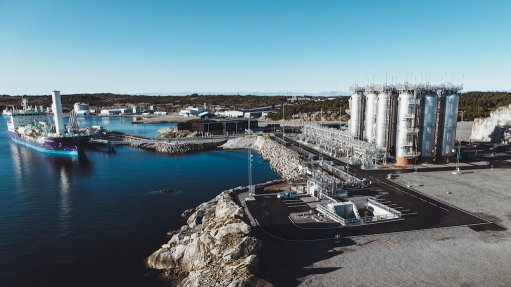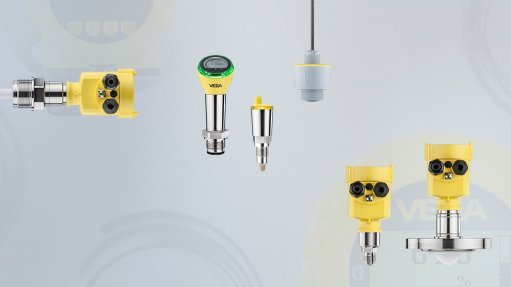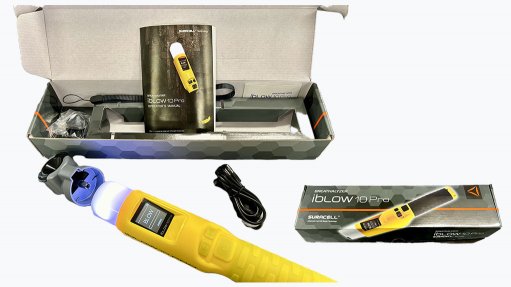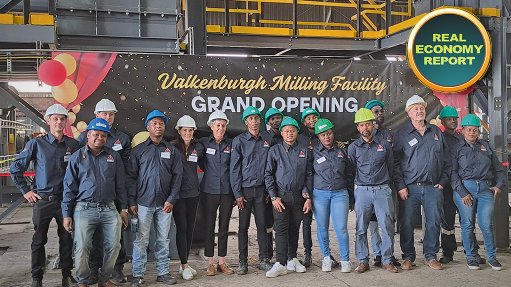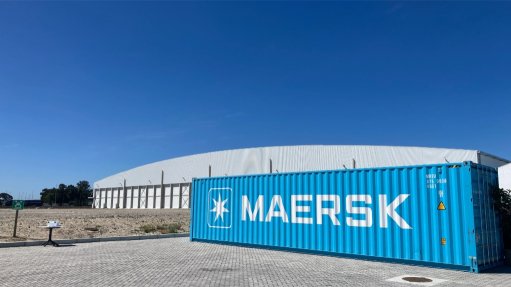Connecting with the steel supply chain on the safety and structural integrity of hot-dip galvanized fasteners
This article has been supplied and will be available for a limited time only on this website.
Hot-dip galvanizing, a tried and tested technology which provides barrier protection and cathodic corrosion protection, ensures safety and structural integrity when applied to fasteners. Although South Africa has the capability and capacity to manufacture these, volumes remain small. A clearer understanding of the benefits of hot-dip galvanizing fasteners - as well as the knowledge of and adherence to stringent industry standards - could grow the market and benefit the entire supply chain, says Robin Clarke, Executive Director of the Hot Dip Galvanizers Association of Southern Africa (HDGASA).
The nuts and bolts of hot-dip galvanising
The conventional method of hot-dip galvanizing, jigging components onto a flight bar and dipping them into molten zinc, is not feasible for small fasteners. Instead, they are placed in perforated baskets for hot-dip galvanizing, and then transferred to a centrifuge to spin off any unreacted zinc. This leaves a carefully controlled amount of zinc on the fastener with very good definition in the threaded area.
For the hot-dip galvanizing of fasteners, the HDGASA supports and promotes adherence to the ISO 10684 and the SANS 121:2024 / ISO 1461:2022 standard. These specify a minimum coating thickness of 50 microns for threaded articles with a diameter exceeding 6mm; and 25 microns for those with diameters equal to or less than 6mm.
Clarke emphasises that engineers design structures with sufficient strength to perform their functions: “Corrosion control is integral to strength calculations. The use of the correct fasteners, particularly in a structural steel environment or highly corrosive climate, is critical. The considerations applied to corrosion control of nuts and bolts should, at all times, equal those applied to the main structural members.”
Fastening on to the benefits
A common misconception among users is that any zinc-coated item is hot-dip galvanized: “Hot-dip galvanizing produces a significantly thicker zinc coating than zinc plating. Often fasteners specified as hot-dip galvanized are supplied as zinc-plated, resulting in reduced durability due to thinner coatings,” Clarke observes.
A zinc-plated fastener typically has a coating thickness of around 10 microns, which is 2.5 to 5 times thinner than the minimum specified in hot-dip galvanizing standards. It follows that hot-dip galvanizing offers a 2.5 to 5 times greater level of corrosion control and service life.
Clarke also warns against using stainless steel fasteners to connect hot-dip galvanized steel components: “This mismatch of materials creates a galvanic corrosion cell which accelerates corrosion of the hot-dip galvanized component. In fact the hot-dip galvanized component sacrifices itself to protect the stainless-steel nuts and bolts. The hot-dip galvanized steel retreats from the stainless steel, giving the incorrect impression that the hot-dip galvanized coating has failed.”
Price and aesthetics are also challenges, with the thin coating on a painted article appearing more attractive and more cost-effective. Clarke concedes that, with South African construction supply chains under pressure, there is always a temptation to resort to cheaper options, without sufficiently considering how these will perform from a safety and quality perspective.
Connecting over challenges
Furthermore, Clarke points out that concerns surrounding hot-dip galvanizing of high tensile nuts and bolts which exceed a 1 000 mega Pascals (MPa) tensile strength rating are to be re-evaluated: “While it is perceived that these are prone to hydrogen embrittlement during the galvanizing process and should not be hot-dip galvanized, German companies are hot-dip galvanizing tensile fasteners at volume. This is done by mechanically cleaning fasteners and flash pickling them, to minimise the potential for hydrogen ingress into the fastener,” he explains.
He also mentions that correct storage and handling of hot-dip galvanized fasteners is imperative. These should be stored and delivered to site with the nut secured onto the bolt:
“The torqueing of hot-dip galvanized fasteners is usually done by the ‘turn of the nut’ method. The method of fastening is to turn the nuts to achieve a snug fit between plies. Once that is done, the nut is marked and then turned (depending on the size and length of the nut and the bolt) by a further third to two-thirds full turn.
Correctly hot-dip galvanized fasteners play an integral role in the ‘nuts and bolts’ of durable, successful steel construction: “The HDGASA is committed to working with our members and the wider steel supply chain, to ensure the quality and standards of hot-dip galvanized fasteners, through the provision of guidance, technical education and advisory services,” Clarke concludes.
Article Enquiry
Email Article
Save Article
Feedback
To advertise email advertising@creamermedia.co.za or click here
Comments
Press Office
Announcements
What's On
Subscribe to improve your user experience...
Option 1 (equivalent of R125 a month):
Receive a weekly copy of Creamer Media's Engineering News & Mining Weekly magazine
(print copy for those in South Africa and e-magazine for those outside of South Africa)
Receive daily email newsletters
Access to full search results
Access archive of magazine back copies
Access to Projects in Progress
Access to ONE Research Report of your choice in PDF format
Option 2 (equivalent of R375 a month):
All benefits from Option 1
PLUS
Access to Creamer Media's Research Channel Africa for ALL Research Reports, in PDF format, on various industrial and mining sectors
including Electricity; Water; Energy Transition; Hydrogen; Roads, Rail and Ports; Coal; Gold; Platinum; Battery Metals; etc.
Already a subscriber?
Forgotten your password?
Receive weekly copy of Creamer Media's Engineering News & Mining Weekly magazine (print copy for those in South Africa and e-magazine for those outside of South Africa)
➕
Recieve daily email newsletters
➕
Access to full search results
➕
Access archive of magazine back copies
➕
Access to Projects in Progress
➕
Access to ONE Research Report of your choice in PDF format
RESEARCH CHANNEL AFRICA
R4500 (equivalent of R375 a month)
SUBSCRIBEAll benefits from Option 1
➕
Access to Creamer Media's Research Channel Africa for ALL Research Reports on various industrial and mining sectors, in PDF format, including on:
Electricity
➕
Water
➕
Energy Transition
➕
Hydrogen
➕
Roads, Rail and Ports
➕
Coal
➕
Gold
➕
Platinum
➕
Battery Metals
➕
etc.
Receive all benefits from Option 1 or Option 2 delivered to numerous people at your company
➕
Multiple User names and Passwords for simultaneous log-ins
➕
Intranet integration access to all in your organisation







